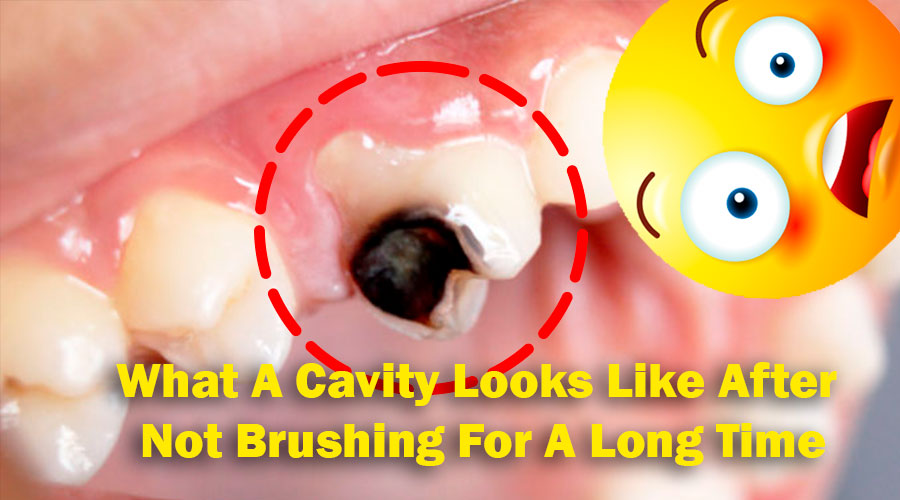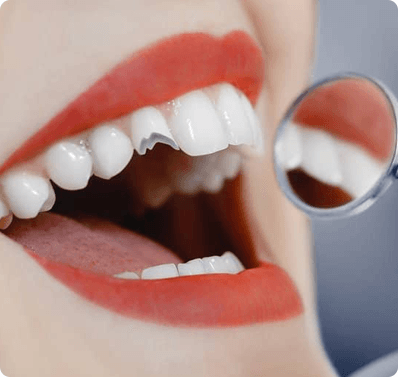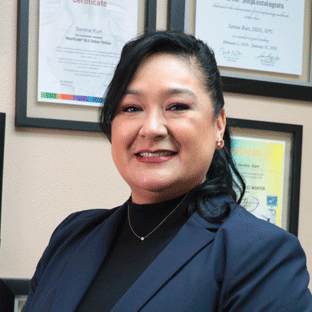What does a cavity look like? Well, a cavity is a decayed part of a tooth caused for different factors. Plaque is one of these causes, and it is a buildup of bacteria that increases on sugar left behind on teeth and gums, generating tooth-decaying acid.
But do you know how to identify them? Signs of cavities often depend on how severe it is and where its location is. Generally, you can notice symptoms until the decayed area gets larger. But, there are ways to help you prevent and treat cavities on time.
Caries permanently damages any area of your teeth but can be treated in numerous ways. The most common cause for cavities is not brushing and flossing after eating, allowing bacteria to slowly cover up an area of your teeth, causing it to deteriorate permanently.
The most common individuals that may be at a higher risk than others are kids and teenagers. Cavities are much more common than you might think, as the majority of the population has caries forming on their teeth.
The most common causes of caries are visible just by looking in the mirror, but other forms of cavities are not visible as they can develop from beneath your teeth or even inside of them. If they go unnoticed or do not receive treatment, they can lead to more severe issues leading to expensive dental procedures.
Kids are most likely to lose their baby teeth containing the cavities but must be aware that their second set of teeth is permanent, requiring even more care. Cavities tend to get much more extensive and deteriorate the teeth much quicker than other dental infections.
With time, the individual’s foods will worsen the cavity leading to unbearable toothaches, infectious diseases, and harmful bacteria. Worst case scenario, you will lose your tooth permanently; that is the reason why dental surgeons recommend staying away from sugary beverages and snacks as well as salty foods.
What Does It Feel Like To Have A Cavity?
A lot of people that struggle with cavities say it’s a real problem. Some describe it as an unbearable sensation. Many dentists in San Diego recommend reviewing the following possibilities as they can take care of some before any amount of caries begins to develop; these signs come in the following:
- Many people state that they sense a bit of pain once they bite down on food or over their teeth, generally in their jaw or molars.
- Teeth have a way of advising you it’s time to see your local dental clinic as they may not appear as white instead develop a shade of yellow or brown stains over the surface of your teeth.
- Teeth may also generate small holes in the center area of your teeth.
- Your teeth also have a mechanism that reacts when you consume something that contains too much sugar, like a soft drink. Eating cold foods can also generate a painful sensation as well as hot foods.
- The most common reaction to early signs of cavities is frequent or painful sensitivity in numerous areas of the individual’s mouth. Even when not chewing or drinking anything, the patient’s teeth may present sensitivity episodes while resting or moving.
- Toothaches or an uncontrollable sensation of pain can also occur when the individual does not implement any dental care habits.
- Brushing and flossing can also become a tedious process once your tooth is at a point of no return. This is when a tooth may require dental operations or oral treatments of any kind to solve the issue.
Dental specialists state that it is typical to treat patients that probably didn’t notice the cavity until it was too late.
Try visiting your local dental office and schedule an appointment; dental specialists recommend visiting your dentist at least twice a year for a dental check-up session that involves cleaning and other dental treatments. Even if you may follow a strict dental care habit that may come in the form of brushing after every meal, you may still be at risk of developing cavities. So even if your mouth doesn’t hurt, you should try visiting your dentist to make sure.
What Does A Cavity Look Like On A Tooth?
View this post on Instagram
There are various ways to detect cavities; these come in the form of plaque accumulation around teeth or your tongue over time. So, since you need to uncover them quickly in their early stages, these tips may help you. There are also diverse forms of plaque that attack your tooth’s outer surface disrupting your tooth enamel.
The following are the types of cavities that can potentially harm your teeth:
- smooth surface cavities are the easiest to deal with as they are visible to you and the dental surgeon
- pit and fissure cavities harm the sides of teeth as a toothbrush may not be able to clean these areas
- root cavities generally affect the interior of the tooth
The accumulation of tartar can create plaque or cavities that not only affect your teeth but can also potentially damage your throat. Most noticeably, cavities appear in the back of your mouth, around your molars as molars have a pool like an appearance, allowing plaque to accumulate over and around the molar.
Later struggles can come in the form of the following:
- Deteriorated or chipped teeth
- Swelling around the teeth, in some cases generating pus
- Tooth abscess
- Abnormal pain or sensitivity
- Tooth positioning such as shifting or tooth loss
Remember, preventing oral cavities is very simple if you brush and floss daily. Drinking water and visiting your dentist in Clairemont can prevent your teeth from developing harmful dental diseases, avoiding future dental issues. Regularly brushing and flossing will reduce the chance of developing cavities, thus providing you with a brighter smile. These methods of dental care should become a habit as they are your best protection against tooth decay.





